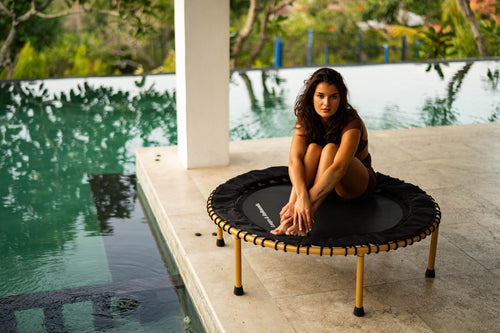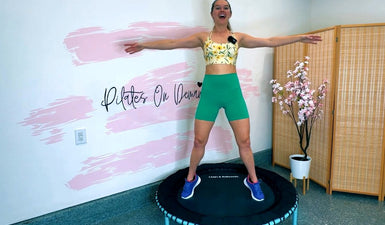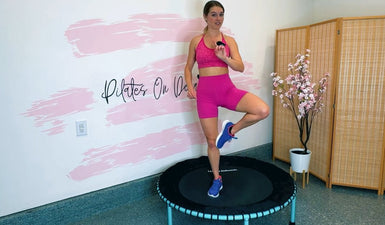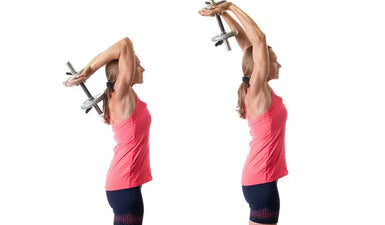Starting your first gym workout can feel a bit overwhelming, right? You've seen the equipment, maybe heard about all the different exercises, and you're wondering where to even begin. This guide is here to make your first gym workout experience smooth and productive. We'll break down the basics of strength training, how to prepare, and what to expect, so you can walk into the gym with confidence and leave feeling accomplished. Let's get you started on the right foot with your gym workout journey.
Key Takeaways
- Understand that a regular gym workout offers benefits like burning more fat, avoiding injuries, improving mood, and boosting confidence.
- Prepare for your gym workout by including a dynamic warm-up, bringing the right gear, and staying hydrated and fueled.
- Focus on mastering proper form for basic strength training exercises to get the most out of your gym workout and prevent injuries.
- Structure your gym workout by understanding sets, reps, and weight selection, and by allowing adequate rest between exercises.
- Progress your gym workout gradually by increasing the challenge through progressive overload, and always listen to your body to avoid overexertion.
Getting Started With Your First Gym Workout

So, you've signed up for a gym membership and maybe even packed a bag. That's a huge first step! Now comes the part where you actually walk through those doors. It can feel a little overwhelming at first, but with a little planning, your first gym workout can be a positive experience. The goal right now isn't to become a fitness guru overnight, but to get comfortable and learn the ropes.
Understanding The Benefits Of A Gym Workout
Why bother with a gym in the first place? Well, beyond just looking good, regular exercise at a gym offers a lot. You'll likely notice your energy levels get a boost, making everyday tasks feel a bit easier. Your body will also become more flexible and mobile, which can help prevent those little aches and pains that pop up. Plus, focusing on strength training can really help improve your posture. It's not just about lifting weights; it's about building a stronger, more capable you.
Setting Realistic Expectations For Your First Gym Visit
When you walk into the gym for the first time, remember that everyone started somewhere. You're not expected to know everything or lift the heaviest weights. Your primary goal for your first few visits should be to get familiar with the space and the equipment. Don't try to do too much too soon. It's better to do a few exercises with good form than to rush through many with poor form. Think of it as an exploration phase. You're learning where things are and how they work.
Creating A Beginner Workout Plan
Having a plan, even a simple one, makes a big difference. It gives you direction and helps prevent that feeling of
Preparing For Your Gym Workout

Alright, so you've got your gym bag packed and you're ready to hit the weights. That's a big step! But before you jump into the thick of it, let's talk about getting ready. Proper preparation can make a huge difference in how your first few workouts feel and how much you get out of them. It's not just about showing up; it's about showing up ready to work.
The Importance Of A Dynamic Warm-Up
Think of your body like a car engine. You wouldn't just start driving at full speed on a cold morning, right? Same goes for your muscles. A dynamic warm-up gets your blood flowing and your joints moving, preparing them for the work ahead. This isn't just about feeling good; it's a key step in preventing those annoying strains and pulls that can sideline you before you even get started.
Here’s a quick routine to get you started:
- Light Cardio: Start with 5-10 minutes of something easy like brisk walking or cycling. Just enough to get a little sweat going.
- Arm Circles: Forward and backward, small circles to big circles. Get those shoulders loose.
- Leg Swings: Forward and backward, and side to side. Keep your core stable while you swing.
- Torso Twists: Gentle twists from side to side to loosen up your back and core.
Skipping the warm-up is like trying to run a marathon without stretching. You might get away with it once or twice, but eventually, something's going to give. It's better to invest a few minutes now than deal with pain later.
Essential Gear For Your Gym Workout
While you don't need a whole lot to start, having the right gear makes things a lot more comfortable and efficient. You want to focus on your workout, not on uncomfortable shoes or a bag that's falling apart.
- Comfortable Workout Clothes: Breathable fabrics are your friend. You'll be moving and sweating, so choose clothes that allow for a good range of motion and wick away moisture.
- Supportive Shoes: Good athletic shoes are a must. They provide the support your feet need for lifting and moving around.
- Water Bottle: Staying hydrated is super important, and having your own bottle means you can refill it easily.
- Towel: For wiping down equipment after use and for your own sweat.
Nutrition And Hydration For Optimal Performance
What you eat and drink before and after your workout plays a big role in how you feel and perform. You don't need to be a nutrition expert, but a few simple guidelines can help.
- Pre-Workout Fuel: Aim for a light meal or snack about 1-2 hours before you hit the gym. Think complex carbs for energy, like a banana, oatmeal, or a small sandwich. Avoid heavy, fatty foods that can make you feel sluggish.
- Hydration is Key: Drink water throughout the day, not just right before your workout. During your workout, sip water regularly. If you're planning a longer session, consider a sports drink to replenish electrolytes, but for most beginner workouts, water is perfectly fine.
- Post-Workout Recovery: Within an hour or two after your workout, try to have a meal or snack that includes protein and carbs. This helps your muscles repair and rebuild. A protein shake, Greek yogurt with fruit, or chicken with rice are good options. Getting started with a beginner strength training routine can be much smoother when you're fueling your body correctly.
Fundamental Strength Training Exercises
Alright, let's talk about the actual movements you'll be doing to build that strength. It can feel a bit overwhelming at first with all the machines and weights, but we're going to focus on some core exercises that hit the major muscle groups. Think of these as your building blocks.
Lower Body Strength Training Moves
Your legs are the foundation of your body, so giving them some attention is a smart move. Strong legs help with everyday activities and support your entire frame. We'll start with a couple of reliable exercises.
- Squats: This is a classic for a reason. Stand with your feet about shoulder-width apart, toes pointing slightly out. Lower your hips as if you're sitting back into a chair, keeping your chest up and your back straight. Go as low as you comfortably can, then push back up through your heels. You can start with just your bodyweight.
- Lunges: Step forward with one leg, lowering your hips until both knees are bent at about a 90-degree angle. Your front knee should be directly over your ankle, and your back knee should hover just off the floor. Push off your front foot to return to the starting position, then switch legs. These are great for balance too.
- Glute Bridges: Lie on your back with your knees bent and feet flat on the floor, hip-width apart. Squeeze your glutes and lift your hips off the ground until your body forms a straight line from your shoulders to your knees. Hold for a second, then slowly lower back down. This really targets those glutes.
Remember, the goal here isn't to lift the heaviest weight possible right away. It's about learning the movement and feeling the muscles work. Focus on control and a steady pace.
Upper Body Strength Training Moves
Now, let's give your upper body some love. This will help with posture and make carrying things feel a lot easier.
- Push-ups: You can do these on your knees or toes. Start in a plank position, hands slightly wider than your shoulders. Lower your chest towards the floor, keeping your body in a straight line. Push back up. If regular push-ups are too tough, dropping to your knees is a great modification.
- Dumbbell Rows: Grab a dumbbell in one hand. You can brace yourself by placing your other hand and knee on a bench or sturdy surface. Let the dumbbell hang straight down. Pull the dumbbell up towards your chest, squeezing your shoulder blade. Lower it back down with control. Do one side, then switch.
- Overhead Press (with dumbbells): Sit or stand holding dumbbells at shoulder height, palms facing forward. Press the dumbbells straight up overhead until your arms are fully extended. Slowly lower them back to the starting position. This works your shoulders and triceps.
Core Strengthening Exercises
Your core is your body's powerhouse. A strong core helps with almost every movement you make and protects your back.
- Plank: Get into a push-up position, but rest on your forearms instead of your hands. Keep your body in a straight line from your head to your heels. Engage your abs and hold. Try to hold for 20-30 seconds to start.
- Bird-Dog: Start on your hands and knees. Extend your right arm straight forward and your left leg straight back, keeping your core tight and hips level. Hold for a moment, then return to the start. Switch sides. This is fantastic for stability.
- Crunches: Lie on your back with your knees bent and feet flat on the floor. Place your hands lightly behind your head or across your chest. Engage your abs and lift your head and shoulders off the floor. Lower back down slowly. Don't pull on your neck.
Structuring Your Gym Workout Routine
Alright, so you've got your exercises picked out and you're ready to hit the gym. But how do you actually put it all together? It's not just about doing a bunch of reps randomly. We need a plan, and that's where sets, reps, and rest come in. Think of it like building something – you need the right measurements and breaks to make it strong.
Sets, Reps, And Weight Selection
This is the core of your strength training. You'll hear terms like 'sets' and 'reps' thrown around a lot. A 'rep,' short for repetition, is just one complete movement of an exercise. A 'set' is a group of reps performed consecutively. For beginners, aiming for 3 sets of 8-12 reps is a solid starting point for most exercises. This range is generally good for building muscle and strength.
When it comes to picking the weight, the goal is to choose a weight that challenges you by the last couple of reps in each set, but still allows you to maintain good form. If you can easily bang out 12 reps without breaking a sweat, the weight is too light. If you can't even get to 8 reps with shaky form, it's too heavy. It's a bit of trial and error at first, but you'll get the hang of it. You can find a 30-minute gym machine workout routine that can help you get a feel for different weights.
Here's a quick rundown:
- Reps: The number of times you perform an exercise in a row.
- Sets: A group of reps.
- Weight: The resistance you're lifting.
Rest And Recovery Between Sets
Don't just jump from one set to the next without a breather. Rest is when your muscles actually repair and grow stronger. For strength training, a rest period of 60 to 90 seconds between sets is usually recommended. This gives your body enough time to recover without letting your heart rate drop too much. If you're doing a more intense exercise or lifting heavier, you might need a bit longer, maybe up to two minutes. Listen to your body; if you're still feeling winded, take a little more time.
Balancing Strength Training And Cardio
So, should you do all your lifting first, then cardio? Or mix it up? For beginners, it's often best to separate them or do cardio after your strength training. If you do intense cardio before lifting, you might not have enough energy for your strength work. A good approach is to dedicate certain days to strength training and others to cardio, or to do your strength training first when you're fresh, followed by a moderate cardio session. You don't need to go crazy with cardio right away; focus on building that strength foundation first.
Remember, consistency is more important than intensity when you're starting out. It's better to have a slightly easier workout that you can complete consistently than to push yourself too hard and risk injury or burnout.
Mastering Form And Safety

Alright, let's talk about something super important: doing your exercises the right way and staying safe at the gym. It’s easy to get caught up in lifting heavy or doing a ton of reps, but if your form is off, you're not getting the most out of it, and worse, you could get hurt. Focusing on proper technique is way more important than how much weight you're lifting when you're starting out.
Prioritizing Proper Exercise Form
Think of good form as the blueprint for every movement. It means your body is in the right position to work the intended muscles effectively and safely. When you nail the form, you're building a solid foundation for all your future workouts. It's about control, not just brute force.
Here's a quick rundown on why it matters so much:
- Muscle Activation: Correct form ensures you're actually hitting the muscles you want to work, leading to better results.
- Injury Prevention: Bad form puts unnecessary stress on your joints, ligaments, and tendons, which can lead to strains, sprains, or worse.
- Efficiency: When you move correctly, you use your energy more effectively, making your workouts more productive.
- Long-Term Progress: Mastering the basics now means you can progress safely and effectively down the line without hitting plateaus caused by poor mechanics.
Common Mistakes To Avoid In Your Gym Workout
We all make mistakes, especially when we're new to something. Here are a few common slip-ups to watch out for:
- Ego Lifting: Trying to lift too much weight too soon. This is a fast track to injury and poor form.
- Ignoring the Warm-Up: Jumping straight into heavy lifts without preparing your muscles and joints. Your body needs to be woken up!
- Rushing Through Reps: Moving too quickly without controlling the weight. The lowering (eccentric) part of a lift is just as important as the lifting (concentric) part.
- Not Engaging the Core: Letting your midsection go slack during exercises like squats or presses. Your core is your body's stabilizer.
- Looking Down During Squats/Deadlifts: This can put your neck in an awkward position. Try to keep your neck in a neutral alignment with your spine.
When you're learning a new exercise, it's a good idea to start with lighter weights or even just your bodyweight. Watch videos, read descriptions, and if possible, have someone knowledgeable check your form. It might feel slow at first, but it's a worthwhile investment in your fitness journey.
Listening To Your Body To Prevent Injury
Your body is pretty good at telling you what's up, if you pay attention. Pushing through sharp pain is a bad idea. Soreness after a workout? Totally normal, especially when you're starting. But a sharp, sudden pain during an exercise? That's your cue to stop. Don't try to be a hero and push through it. Rest, assess what might have gone wrong, and if it persists, consider talking to a doctor or physical therapist. It's better to take a day or two off than to be sidelined for weeks or months.
Progressing Your Gym Workout
So, you've been hitting the gym consistently, getting the hang of the exercises, and feeling stronger. That's fantastic! But now you might be wondering, 'What's next?' Sticking with the same routine forever isn't going to cut it if you want to keep seeing results. Your body is smart; it adapts. This means you need to give it new challenges to keep growing and getting fitter. This is where progressive overload comes in.
Progressive Overload Explained
Basically, progressive overload means gradually increasing the stress on your muscles over time. Think of it like this: your muscles get stronger when they're challenged beyond what they're used to. If you always lift the same weight for the same number of reps, your muscles will eventually say, 'Okay, I've got this,' and stop changing. To keep building strength and muscle, you need to keep pushing that boundary a little bit.
When To Increase Weight Or Reps
Figuring out when to ramp things up is a common question for beginners. A good rule of thumb is to increase the challenge when you can comfortably complete your target sets and reps with good form. For example, if your goal is to do 3 sets of 10 reps with a certain weight, and you find yourself breezing through the last few reps of the last set, it's probably time to consider a change.
Here’s a simple way to think about it:
- Strength Goal (3-6 reps): If you can easily hit 6 reps on your last set for all your sets, try increasing the weight slightly next time.
- Muscle Building Goal (8-12 reps): If you can comfortably hit 12 reps on your last set for all your sets, it's time to add a bit more weight.
- Endurance Goal (12+ reps): If you can easily do more than 12 reps and feel like you could do many more, consider increasing the weight or adding another set.
Don't just blindly add weight, though. Always prioritize maintaining proper form. It's better to lift a little less weight with perfect technique than to lift too much and risk injury. You can also change up the number of reps or sets you do, or even the exercises themselves, to keep your body guessing. For instance, if you've been doing dumbbell rows for a while, you might switch to barbell rows or try a different angle.
The key is to make small, consistent adjustments. Your body needs time to adapt to new demands. Trying to do too much too soon can lead to burnout or injury, which will set you back much further than a slow and steady approach.
Tracking Your Gym Workout Progress
Keeping tabs on your workouts is super important. It helps you see how far you've come and tells you exactly when it's time to make those progressive changes. You don't need anything fancy; a simple notebook or a notes app on your phone will do the trick. Just jot down the date, the exercises you did, the weight you lifted, and how many reps and sets you completed.
Here’s what to record:
- Date of workout
- Exercises performed
- Weight used for each exercise
- Number of reps per set
- Number of sets completed
- How you felt (e.g., easy, challenging, difficult)
Looking back at your log can be really motivating. You'll see those numbers go up over time, which is proof that your hard work is paying off. This data also helps you plan your next workout and make informed decisions about when to increase the weight or reps. It's all part of building a solid workout routine that works for you.
Ready to take your gym routine to the next level? Pushing yourself is key to seeing results. Don't just go through the motions; challenge your body with new exercises and try to beat your personal bests each time you visit the gym. Consistency is important, but so is variety to keep your muscles guessing and growing. Visit our website to discover new workout ideas and tips to help you progress.
Keep Going!
So, you've taken the first big step and learned the basics of strength training. That's seriously awesome. Remember, the gym isn't some exclusive club – everyone starts somewhere, and showing up is half the battle. Don't worry if it feels a little awkward or if you're not lifting the heaviest weights right away. Focus on learning the moves, listening to your body, and just getting comfortable. Consistency is key here. Keep showing up, keep trying new things, and you'll start to see and feel the difference. You've got this!
Frequently Asked Questions
How often should I go to the gym when I'm just starting out?
When you're new to the gym, it's best to start slow. Try going a couple of times a week. As you get stronger and feel more comfortable, you can slowly increase how often you go. The most important thing is to listen to your body and not do too much too soon.
What's the point of warming up before a workout?
Warming up is super important because it gets your muscles ready for exercise. Think of it like waking them up gently. This helps prevent injuries. A good warm-up might include a few minutes of walking and some simple movements like leg swings.
Do I need special clothes or shoes for the gym?
Yes, wearing the right gear makes a big difference! You'll want comfortable clothes that let you move freely. For shoes, athletic shoes that support your feet are best. They help keep you stable and prevent slips.
How do I know how much weight to lift?
Figuring out the right weight takes a little practice. You want a weight that feels challenging but allows you to do the exercise with good form. If you can easily do many reps, the weight is too light. If you can't complete the reps or your form suffers, it's too heavy. Start lighter and gradually increase it.
What's the difference between sets and reps?
Think of 'reps' as the number of times you do a specific movement, like lifting a weight. A 'set' is a group of those reps. For example, you might do 10 reps of a bicep curl, and then rest before doing another set of 10 reps. Beginners often start with fewer sets and reps.
Is it okay to feel sore after a workout?
A little soreness, especially when you're starting, is pretty normal. It means your muscles are working and getting stronger. However, sharp pain is a sign to stop. If you feel pain, rest and don't push through it. Soreness usually fades away after a day or two.

























0 comments